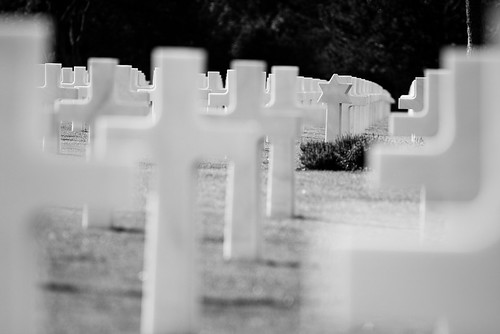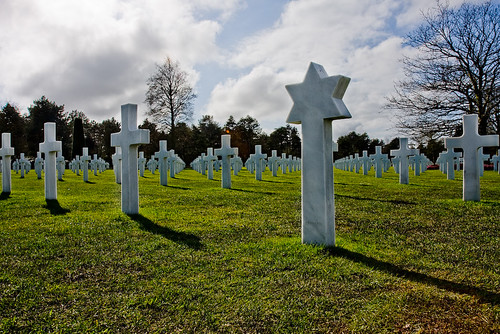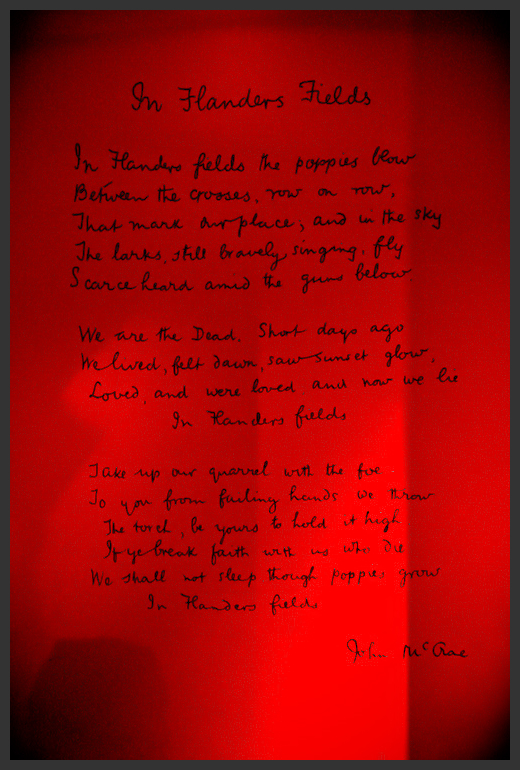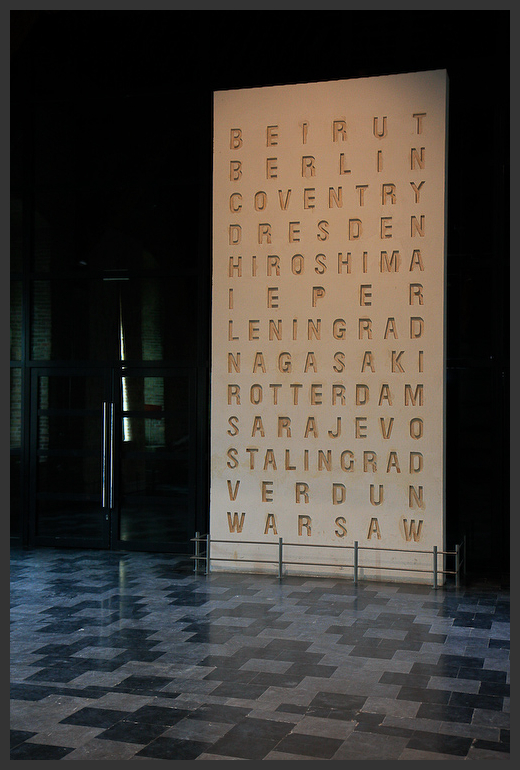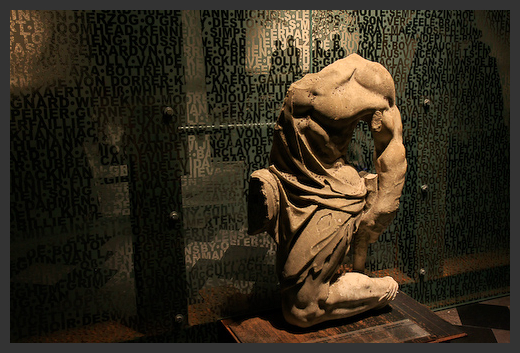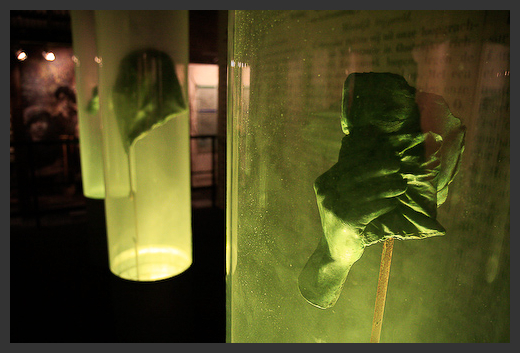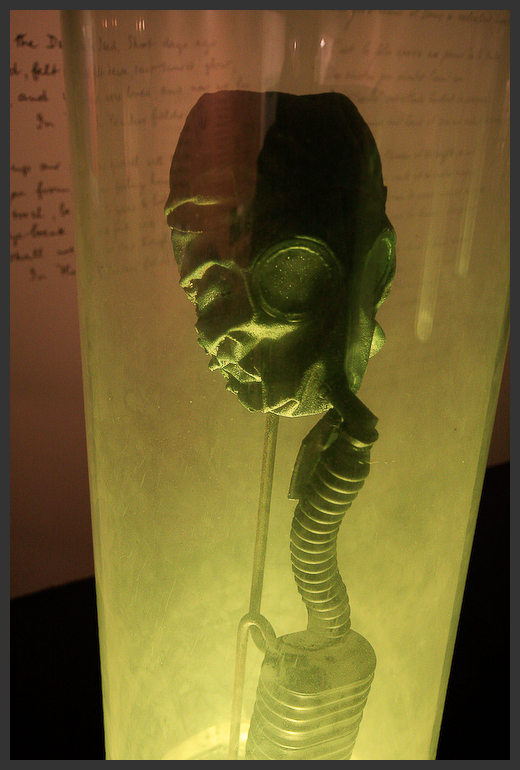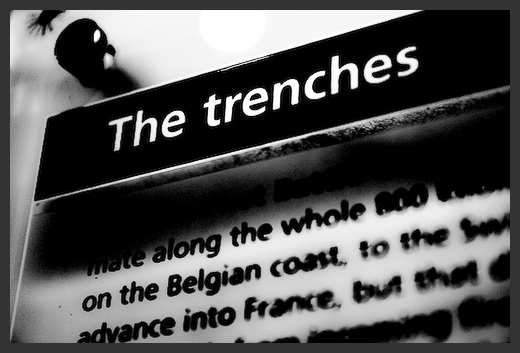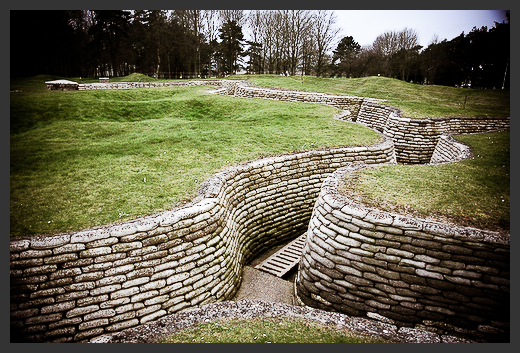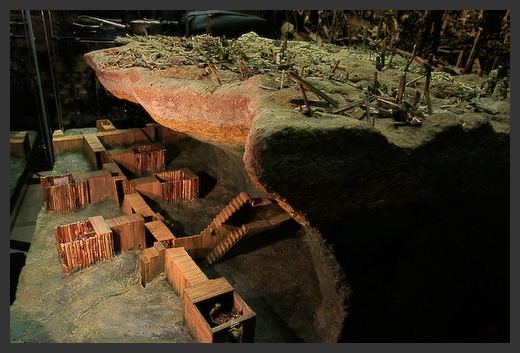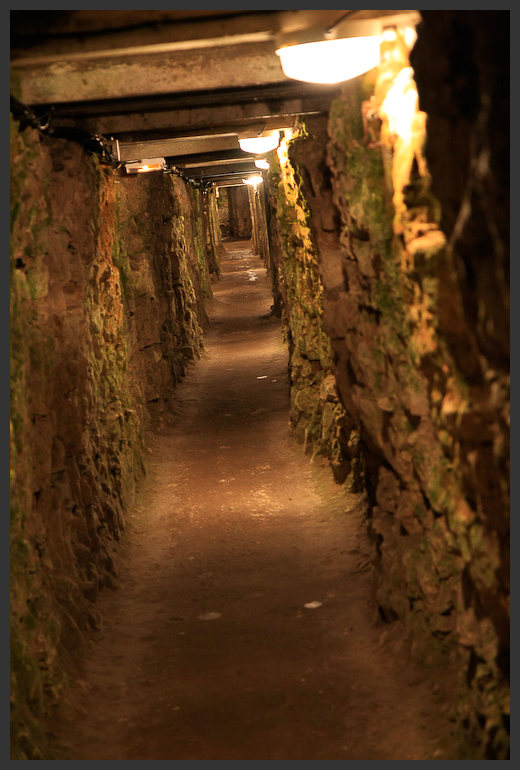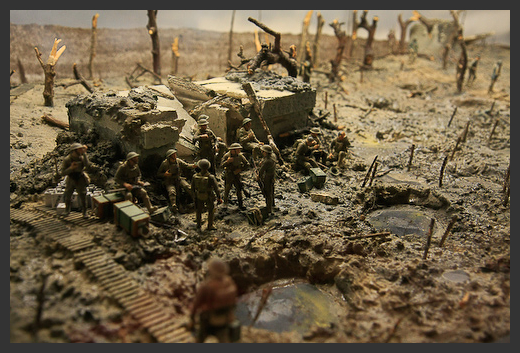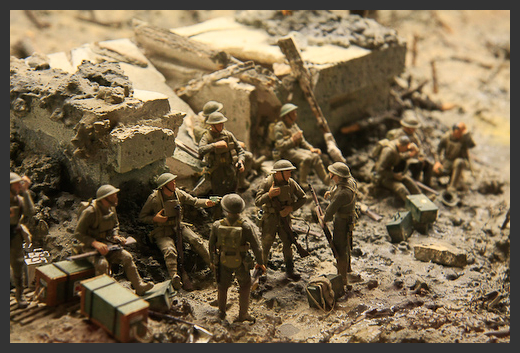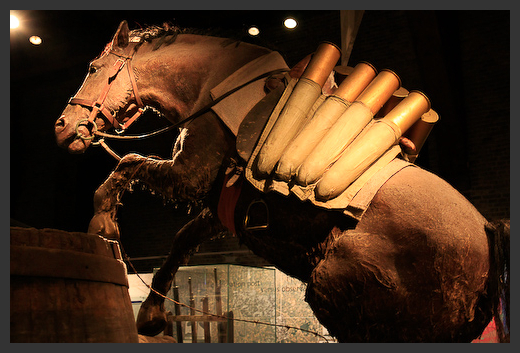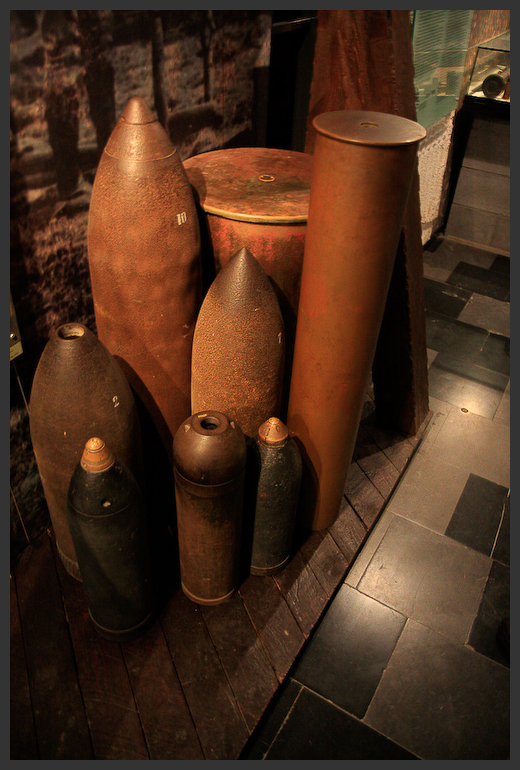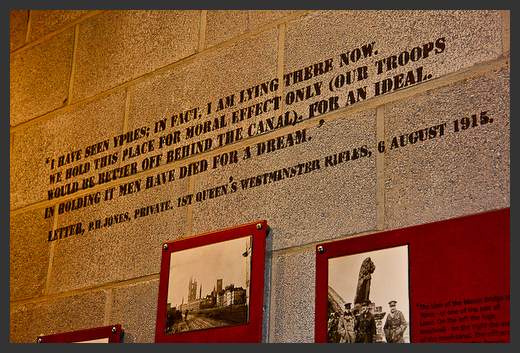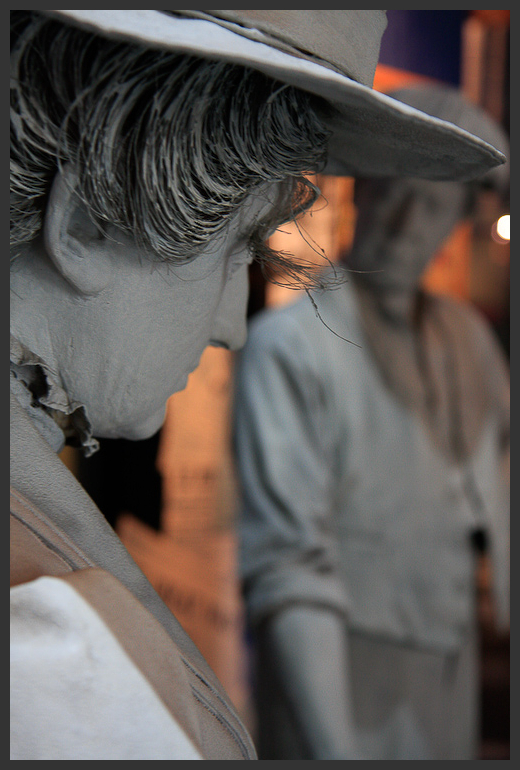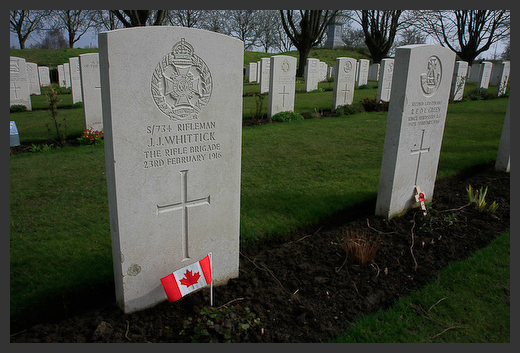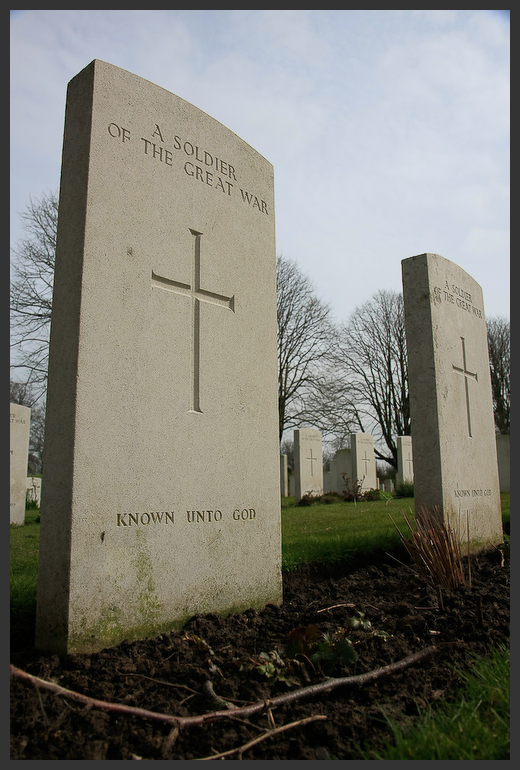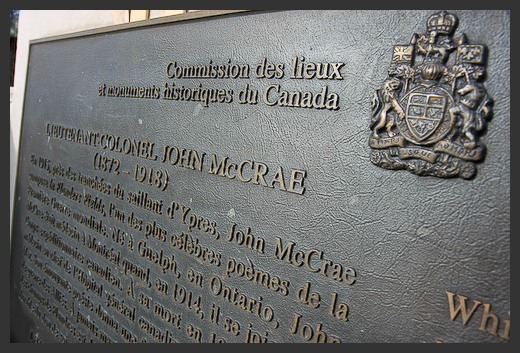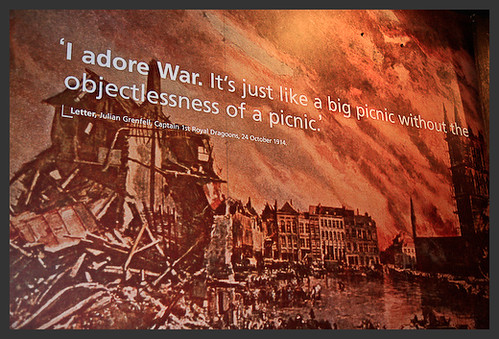In honour of Remembrance Day (Nov 11), I thought I would post some pictures from Flanders Fields. For all you Americans, Remembrance Day is a day when we remember and honor those who died in the Great War (WWI) and WWII and other conflicts. I don't mean to disrespect the USA, but I feel that in Canada much more emphasis is placed on the importance of these events... Here in America, Veterans Day is just another day, and Memorial Day is a boating holiday. Okay, Maybe that was too harsh. I have met several people this year who knew that it was Veterans Day and actually did something to honour the Veterans, such as putting out a flag and keeping them in their thoughts.
In Canada, as a child in elementary school, we would learn a lot about the wars (obviously at an elementary level...) around Remembrance Day. We would have an assembly each year where WWII veterans would come in full uniform and stand at attention as some of them, along with students and people from the community would lay wreaths on crosses. A bugler (or a recording of a bugle) would play Last Post, after which we would observe a minute of silence for those who gave their lives. One or more of the veterans would speak, as well as others. For me these experiences solidified in me a gratitude for freedom, and a respect for the price that was paid.
In regards to my comment above about how I don't feel these things are emphasized in the US, I do not mean it on a personal level, as I know many patriotic Americans who greatly honor those who fought and those who died. Rather, I was stating my own observations on a personal level. After living here 5 years, I personally have not seen anything like Remembrance Day.
That being said, I found upon visiting Europe this spring that they place much more emphasis on the World Wars than anything I experienced in Canada. Obviously it was a LOT closer to home for them (as it WAS IN their home....), but it still amazed me. Though I had been to Europe several times before, this last trip was very educational for me, as we went on a tour of many of the famous WWI and WWII sites. We spent most of the time on the Beaches of Normandy, touring around northern France to visit all the beaches as well as other key places in the war. Something that really surprised me was how much the people of those small towns along the coast still respect and care about their liberators.
Despite all the anti-French sentiments that seem to be so popular here in the States (and in Canada too for that matter, although there it is more directed against French-Canadians... or at least in the west it is...), those people (I don't know about the general French population....) are STILL so grateful for their liberators. There are paintings and murals on buildings that depict American, British, and Canadian soldiers, paratroopers and sailers all over the place with signs saying "Thanks to our Liberators!!"
The US Cemetery at Normandy is one of the most powerful places I visited, with its seemingly endless fields of white stone crosses. There I saw many groups of French schoolchildren touring and learning about what America did for them. I stood with one group of small children as their teacher told them something (in french) and then asked them to have a moment of silence for those who had died.
All in all it was a powerful experience, and got me thinking. I really am grateful for those who fought and died for my freedoms. I really need to be more grateful for them more often, and to do whatever I can to continue to preserve our freedoms.
Well, that turned into quite the rant.

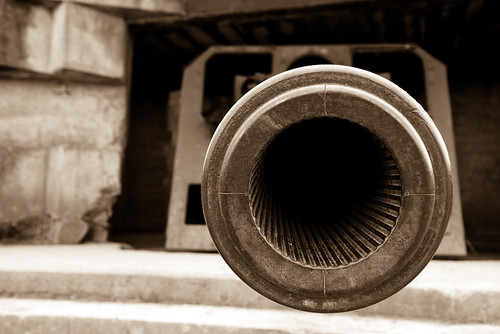
US Cemetary... There were only a few Jewish headstones, and they caught my eye, especially given the backdrop of the holocaust. Many American (and others) lives were given to save the Jews, and in the long run, to save Christian and Jew and all others alike from Hitler. Many Jews also fought in their country's armed forces to save their fellows as well.
